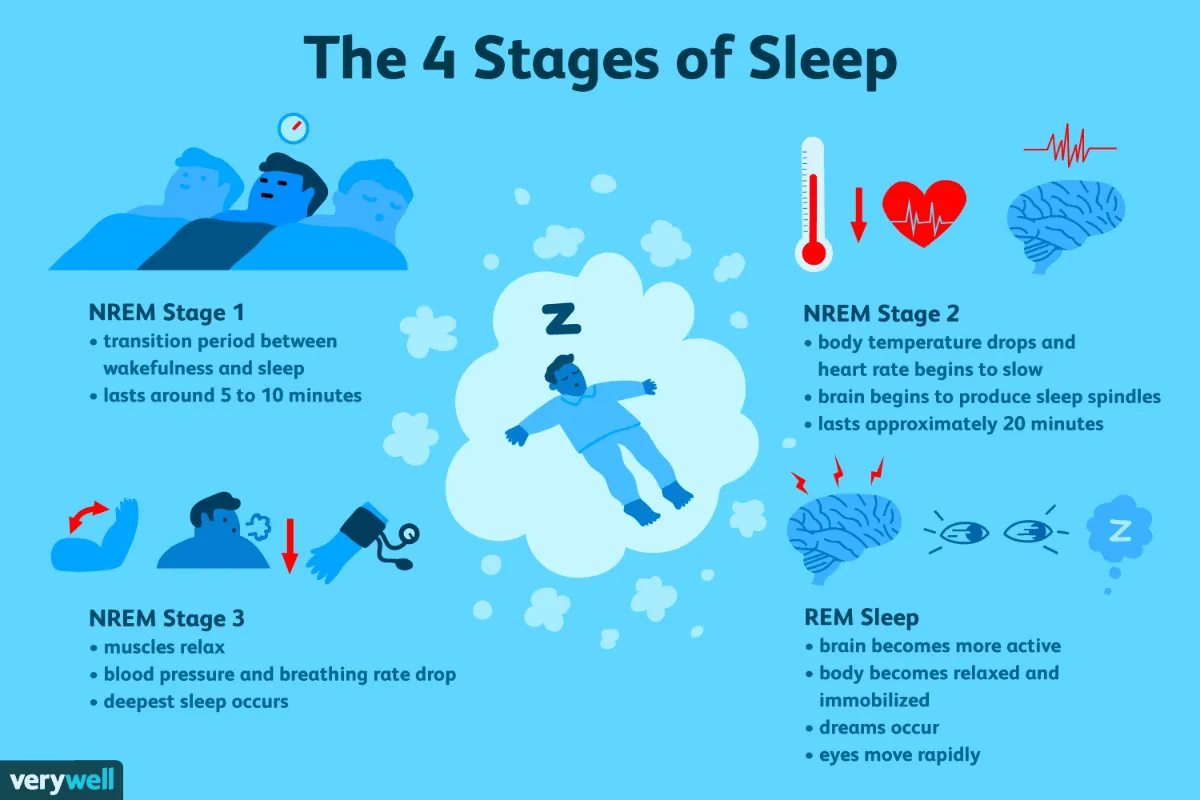Your body goes through two phases and four stages when you sleep, all of which are beneficial to your general health. Your immune system, muscles, memory, and more all depend on getting enough good sleep.
One of the most crucial things you can do for your health is to get enough sleep. Your body uses sleep as a time to:
fix the muscles
develop bones
control hormones and organize memory
What are some ways to get better sleep?
It might be challenging to get the 7 to 9 hours of sleep per night that most adults require. You may increase the length and quality of your sleep by following these sleep hygiene guidelines.
Take time to enjoy the sun: Maintaining a healthy circadian rhythm may be facilitated by exposing your body to natural light during the day.
Establish a cozy sleeping space in your bedroom: You might sleep better if your bedroom has a cozy mattress, pillow, blanket, and other calming furnishings
Move your body or engage in exercise: Exercise for at least half an hour is a fantastic method to potentially lengthen your sleep.
Steer clear of certain meals and stimulants: Caffeine, foods that cause indigestion, and alcohol or nicotine before bed can all disrupt your sleep.
Don’t take too many naps: There are advantages to taking naps, but if you do so for more than half an hour, you may wake up in the middle of the night. Try not to take naps for longer than twenty to thirty minutes.
Sleep stages
Rapid eye movement (REM) and non-rapid eye movement (NREM) are the two phases of sleep, and a full cycle consists of four stages. Usually, you’ll do four to six cycles every night.
Non-REM sleep (N1 through N3) is the term for the first three stages, which constitute a component of the first phase. REM is the last stage and the second phase.
Stage N1 of NREM
The change from consciousness to sleep is known as stage N1.
It is the lightest stage of sleep and usually lasts only a few minutes. You typically don’t realize you were asleep when you’re awakened from N1.
At this point:
Usually, the rolling of the eyes, the heartbeat, the respiration, the muscles, and the brain waves all slow down.
NREM stage N2
The majority of total sleep duration is spent in stage N2. You can still be easily roused from this lighter state of sleep. This is the phase that precedes falling into a deep sleep.
Additionally, you might encounter:
slower breathing and heart rate
no motions of the eyes
a decrease in body temperature
shorter bursts of activity despite slower brain waves
Stage N3 of NREM
The deepest sleep stage is N3, the last stage of non-REM sleep. During this phase, your body carries out a number of health-promoting tasks.
Additionally, you might encounter;
Stage R of REM
Stage R happens roughly ninety minutes after you go to sleep. Each REM cycle lengthens this period, which initially lasts about ten minutes. The last cycle of Stage R could take between thirty and sixty minutes.
Usually, stage R is when you dream. You might probably encounter:
You cycle through all of these stages of sleep four to six times, or roughly every ninety minutes, when you fall asleep. These include: rapid eye movements behind your closed eyelids; faster and more variable breathing; increased blood pressure and heart rate; muscle paralysis, though twitches may occur; and brain activity similar to that of being awake.
Which sleep disorders have the potential to disrupt your sleep patterns?
The quality of sleep can be adversely affected by sleep disorders, which can then result in additional health issues.
Apnea during sleep
The condition known as obstructive sleep apnea (OSA) occurs when your throat’s airways narrow too much to permit airflow, causing you to momentarily cease breathing while you sleep.
For OSA, a continuous positive airway pressure (CPAP) equipment is the primary line of treatment. An OSA sufferer can breathe normally while they sleep thanks to the airflow created by a CPAP machine.
Bilevel positive airway pressure, often known as BPAP or BiPAP, may help you tolerate the pressures if a CPAP machine is ineffective. Occasionally, surgery or an oral appliance may be required.
Sleeplessness
A chronic sleep disorder called insomnia is typified by trouble falling asleep. While some people struggle to stay asleep, others struggle to fall asleep, and some struggle with both.
Excessive daytime weariness and drowsiness are common symptoms of insomnia.
Insomnia is mostly treated with cognitive behavioral therapy (CBT). In order to help you fall and remain asleep, CBT may also be used in conjunction with sleep aids. It might also be beneficial to improve sleep hygiene.

